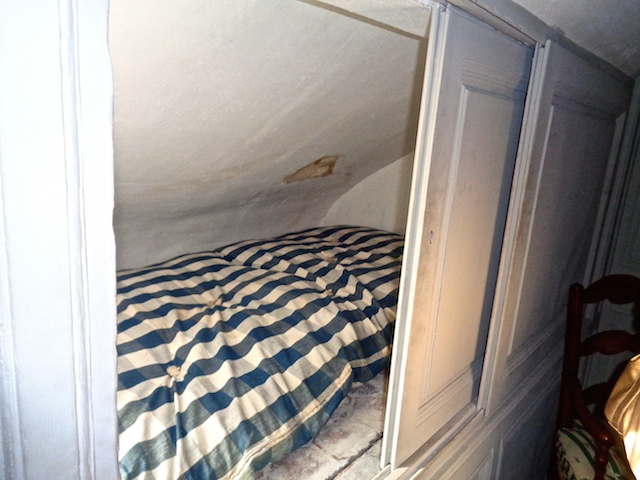A natural part of most households - aristocratic or not - was the presence of servants. Naturally, when the courtiers moved to Versailles their households followed them. However, that presented a new issue. The apartments within the palace proper were often quite small even for the nobles. This meant that it was downright impossible to bring more than a few servants.
The greater families had purchased a plot of land in the village of Versailles where they had erected their own hôtels. One could imagine that it would be far more pleasant to reside in a more spacious and private place than the apartments of the palace. However, the courtiers would strongly disagree. Particularly during Louis XIV, a successful courtier was one who was seen by the king - literally. Even those who did not have a position in the royal households could catch the king's eye or exchange a few words with him; and that is where the opportunity for advancement lay. Yet, to be constantly in attendance meant being as close as possible. For this reason, the majority of the aristocrats preferred to make do with a few rooms until/if a better apartment became available.
For the servants of the aristocratic household this could have a direct influence on where they themselves lived. The vast majority of the household was housed in the family hôtel in Versailles but a few came to call the palace home. A gentleman or a lady could not go through the daily routines without the assistance of either a valet or a chambermaid - and these had to be at hand during the night as well. But where did they stay?
Most apartments consisted of a bedchamber, a cabinet and perhaps a wardrobe. The lucky ones could add a few antechambers or had rather large rooms. In this context, the servants' quarters were in the wardrobe. Today, the word would usually mean a space for storing clothes but the wardrobe - or garderobe - had a wider term in the 18th century. The room was often quite small and used to store a variety of household necessities including clothing, toilet articles and often the chaise percée if it was movable. Likewise, this is where the valet or chambermaid slept, usually on a bed that could be put aside during the day.
 |
| Photo of a cubbyhole used as a bed for a servant. Taken by Sally Christie in 2015 |
Naturally, this also meant that a servant's room was typically incredibly small. For instance, the Duc de Saint-Simon's servant was housed in a tiny room which had such a low ceiling that a man could barely stand upright. While unpleasant it should be kept in mind that the room was not meant for actually living in. The servant would only sleep in the room while the day was spent almost entirely elsewhere. Still, it cannot have been particularly pleasant sleeping in a cramped room with no air circulation or heating.
For those nobles who had managed to get a hold of a particularly spacious apartment, this could be an improvement for their staff as well. In such cases, it was not uncommon for their room to have its own stove for heating but they were then obliged to share.
The natural consequence was that the master and servant lived very close together which came in handy in regards to the service itself but could easily become cramped. The lower ranking servants - such as pages or footmen - were often given field beds which were erected in the antechamber. Every morning they would store these away and go about their duties. Compared to the smaller, inner wardrobes these were at least more spacious.

No comments:
Post a Comment